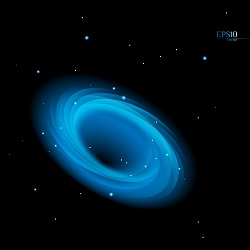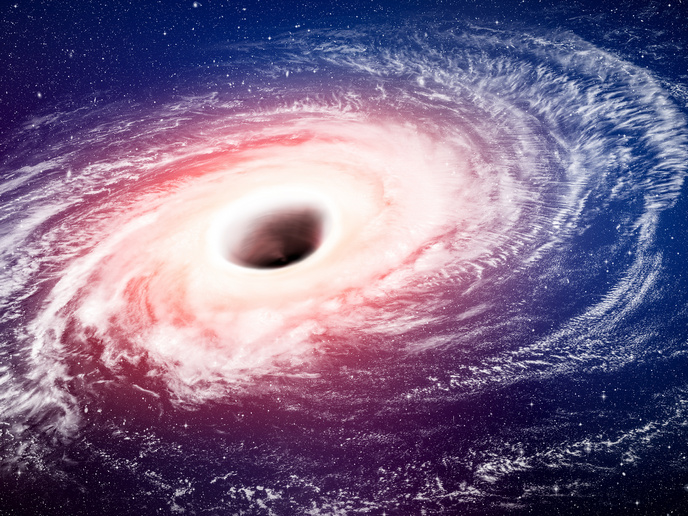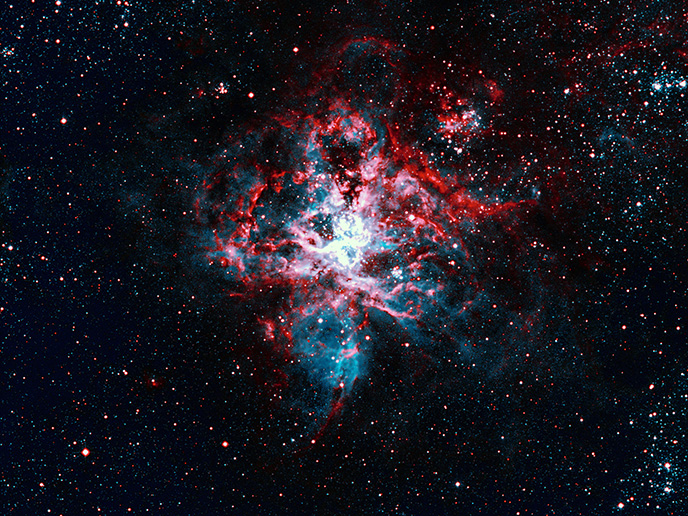How rotation affects matter dynamics around black holes
When in rotation, even the biggest structures will slightly deform. Take our own planet for instance: it presents an equatorial bulge, meaning that its polar diameter is slightly shorter than the equatorial one. And this is all due to the force exerted by rotation. Black holes are no different. Some of them rotate, and the effects of this rotation can be calculated. Or can it? ‘It’s actually pretty difficult,’ says Jorge Rocha, coordinator of the REGMAT (Rotational effects on strongly gravitating systems with matter) project for the University of Barcelona. ‘When rotation is included in spacetime, spherical symmetry is lost and the problem becomes more complicated since more coordinates are involved. Moreover, black holes are accompanied by accretion disks that introduce deviations from the known vacuum solutions. After the discovery of the simplest, non-rotating, black hole solution in 1915, it took almost 50 years to obtain its spinning counterpart.’ With his research, Rocha aimed to deepen our understanding of black hole dynamics in the presence of matter, and particularly the interplay between matter and spacetime rotation. And for that, he decided to consider higher dimensions. ‘With extra spatial directions, spacetimes become characterised by multiple angular momenta. The above difficulties are still present, but there is one key advantage: when the number of spatial directions is even, it is possible to contemplate a class of spacetimes (with all angular momenta equal) which exhibit a large amount of symmetry. Though not having the full spherical symmetry, this is sufficient to make the problem tractable.’ The project also benefited from the assumption that matter was being compressed into infinitely thin surfaces. This is a favourable idealisation, since it allows for constructing spacetimes with matter just by ‘gluing’ previously known vacuum geometries. The novelty of Rocha’s approach resides in the use of (semi-)analytical methods to study gravity in the strong field regime combined with crucial effects from rotation. Such problems typically have to be tackled with demanding numerical simulations. In two years of research, Rocha managed to determine precisely the anisotropies (different pressures coming from different directions) induced on matter by the rotation of spacetime. But another significant result concerns the cosmic censorship hypothesis: ‘This is a problem in classical gravity that has been around for 48 years. In an oversimplified version, this conjecture by Penrose posits that one cannot destroy a black hole horizon leaving behind a visible singularity. My investigations allowed for testing this conjecture in a fully nonlinear regime and in less symmetric situations than previously contemplated. It also permitted the examination of a vast range of cases, by varying the spacetime dimensionality and the type of matter considered. At any rate, the conjecture was found to be robust against all violation attempts,’ he explains. The project’s results could also impact other fields of research, notably equilibration of anisotropic plasma – all thanks to the famous AdS/CFT correspondence. ‘This seems completely unrelated, but this correspondence implies that classical gravitational physics in spacetimes with certain geometrical properties – called anti-de Sitter, or AdS for short – is exactly equivalent to some strongly coupled gauge theories that do not include gravitational interactions at all,’ Rocha says. This means that black hole formation in AdS corresponds to the quantum field theory reaching a thermal state and, in turn, that REGMAT’s method to study gravitational collapse with rotation in AdS can shed light on the equilibration of anisotropic strongly interacting plasmas. This is expected to help capture important aspects of the quark-gluon plasma observed at CERN’s Large Hadron Collider or at the Relativistic Heavy Ion Collider. ‘This is a connection I will explore,’ Rocha concludes.
Keywords
REGMAT, black hole, rotation, matter, spacetime, gravity, Penrose, AdS/CFT, anisotropic plasma, CERN, collider







